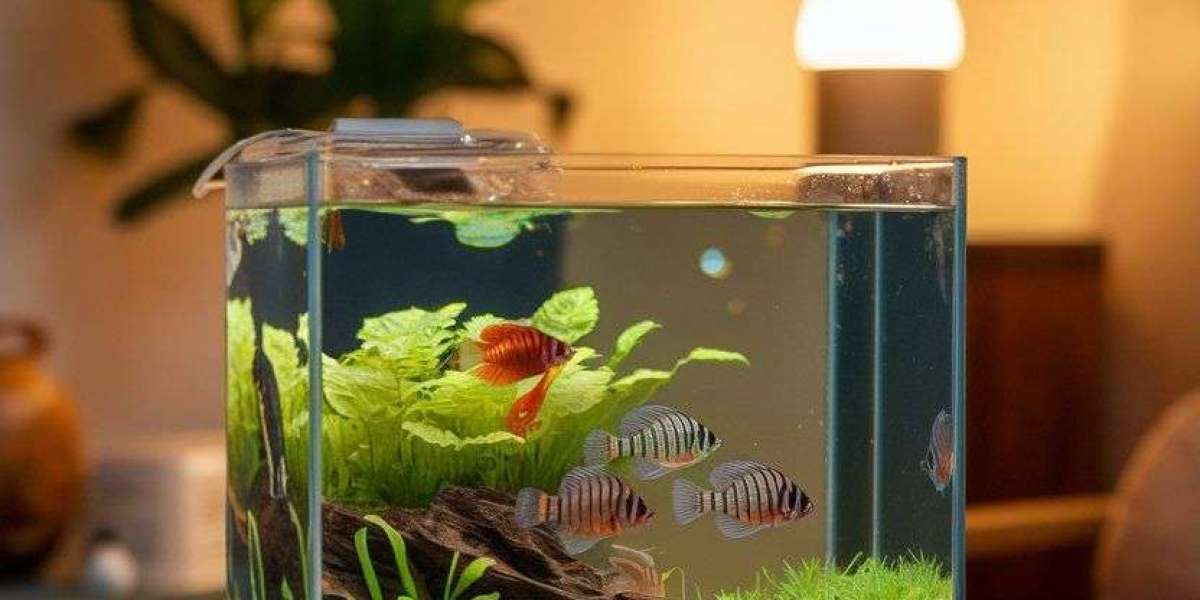Introduction to the Freshwater Aquarium World
A freshwater aquarium is more than just a decorative centerpiece; it’s a peaceful ecosystem you create and care for right in your living space. Whether you’re a beginner or a seasoned fishkeeper, understanding how a freshwater aquarium works and how to maintain it properly is essential for a healthy aquatic environment. It offers a rewarding experience that brings serenity and beauty into your daily life.
Setting Up a Freshwater Aquarium
Before diving into fish selection, it’s crucial to understand the basics of setting up a freshwater aquarium. Start with choosing the right tank size. While a 10-gallon tank might be tempting for beginners, a 20-gallon or larger tank provides more stability in water conditions, making it easier to maintain. Once you have your tank, place it on a level, sturdy surface away from direct sunlight or vents.
Add a suitable substrate such as gravel or sand, followed by decorations, live or artificial plants, and rocks. These elements not only enhance the aesthetic appeal but also provide hiding spots for fish. Install a reliable filtration system, a water heater if needed, and ensure proper lighting for both your fish and plants. Let the tank cycle for a few weeks before adding fish, allowing beneficial bacteria to develop and stabilize the water chemistry in your freshwater aquarium.
Choosing Fish for Your Freshwater Aquarium
Stocking your freshwater aquarium requires careful planning. Compatibility between fish species is key to avoiding stress or aggression in your tank. Popular freshwater species include tetras, guppies, mollies, platies, and bettas. Bottom dwellers like corydoras and algae eaters help keep your tank clean.
Introduce a few fish at a time, allowing your aquarium’s ecosystem to adjust gradually. Overcrowding can lead to poor water quality and stressed fish. Remember, each species has specific needs regarding temperature, pH levels, and tank mates, so always research before purchasing new additions for your freshwater aquarium.
Water Care and Maintenance
Maintaining a healthy freshwater aquarium involves regular water care. Weekly water changes of about 20-30% help remove waste and replenish minerals. Use a water conditioner to neutralize chlorine and harmful chemicals from tap water.
Monitor water parameters such as ammonia, nitrite, nitrate, pH, and temperature. Testing kits are widely available and should be part of your regular maintenance routine. A stable environment ensures your fish remain healthy and vibrant in your freshwater aquarium.
Algae control is another key aspect. While some algae growth is normal, excessive buildup can affect water quality and visibility. Limit light exposure, avoid overfeeding, and consider introducing algae-eating fish or snails.
Feeding and Behavioral Care
Feeding your fish properly is crucial for a balanced freshwater aquarium. Offer high-quality flake, pellet, or frozen food tailored to your fish species. Feed once or twice daily, giving only what your fish can consume in 2-3 minutes. Overfeeding leads to water pollution and health issues.
Observing your fish daily helps detect signs of illness or unusual behavior early. Healthy fish are active, eat regularly, and display bright colors. Quarantine new fish before adding them to your freshwater aquarium to prevent introducing diseases.
Decorating and Personalizing Your Aquarium
A freshwater aquarium can reflect your creativity. Choose themes like natural riverbeds, lush jungle tanks, or even fantasy settings. Live plants not only beautify the tank but also help oxygenate the water and absorb nitrates.
Add driftwood, caves, or ceramic ornaments to give fish places to hide and explore. Use LED lighting to highlight your design and bring out your fish’s natural colors. Customizing your freshwater aquarium makes the experience more enjoyable and engaging.
The Therapeutic Benefits of a Freshwater Aquarium
Beyond aesthetics, keeping a freshwater aquarium can be therapeutic. Watching fish swim calmly reduces stress, lowers blood pressure, and improves mental clarity. Many people find that tending to a freshwater aquarium helps them disconnect from daily stressors and reconnect with nature.
This form of aquatic therapy is why many hospitals, offices, and homes incorporate aquariums in their environments. They promote tranquility and provide a sense of responsibility and accomplishment.
Final Thoughts
Creating a thriving freshwater aquarium involves patience, care, and a willingness to learn. From choosing the right tank and fish to maintaining water quality and personalizing your aquatic space, the journey is both educational and rewarding. A freshwater aquarium offers a unique opportunity to bring a piece of the natural world into your home.
Whether you’re just starting or looking to improve your fishkeeping skills, understanding the fundamentals will ensure long-term success. Dive into the world of freshwater aquarium care and let the beauty of aquatic life enhance your everyday living.










